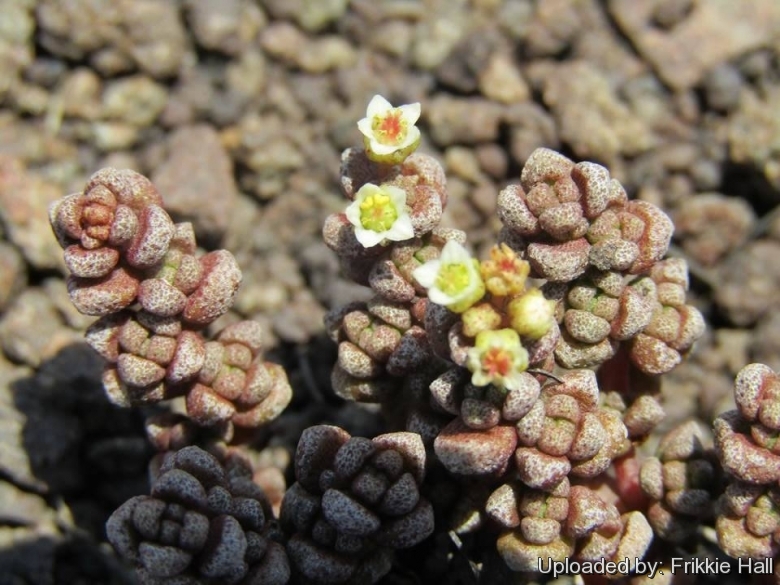
Crassula corallina Photo by: Frikkie Hall
Origin and Habitat: Crassula corallinaSN|26951]]SN|26951]] is widely distributed from the Free State and Eastern Cape to the Richtersveld in South Africa, and south-western Namibia.
Habitat and ecology: It grows in quartzite outcrops in desert-like habitat and dry floodplain. The plant spreads, forming a dense mat that may assist in retaining moisture longer around its own tuberous underground reservoir. Plants may rarely persist for a long time and then develop a thick stem and a thick main root (in subsp. macrorrhiza the branches are always thinner than the very much swollen tap root). The the area is often cold and snowy instead of excruciatingly hot in its blooming season.
Synonyms:
See all synonyms of Crassula corallina
back
Accepted name in llifle Database:Crassula corallina Thunb.Nova Acta Phys.-Med. Acad. Caes. Leop.-Carol. Nat. Cur. 6: 239, 334 (1778)Synonymy: 4
Accepted name in llifle Database:Crassula corallina subs. macrorrhiza ToelkenJ. S. African Bot. 41(2): 101. 1975Synonymy: 3
back
Common Names include:
ENGLISH: Coral Like Crassula, Coral Crassula
AFRIKAANS (Afrikaans): Hasieskos (rabbit's food)
Description: Crassula corallinaSN|26951]]SN|26951]] or "Coral Crassula" is a low growing, spreading, mat forming succulent plant with a sedum-like growth. Its tiny white frosted leaves resemble sea coral (hence the name). Looking closely, the pitted leaf spots that cover the leaf surfaces enhance the coral-like appearance. It should be about the smallest (and hardiest) of all Crassulas. The fragile, leaves and stems detach easily when touched. Flowers are small and partly concealed among the leaves.
Habit: Perennial herbs 2.5-8 cm hight, often with tuberous tap-root.
Roots: Fibrous or tuberous and succulent (subsp. corallina has mainly fibrous or slightly swollen roots while subsp. macrorrhiza has more or less tuberous roots, but all natural populations show some degree of variation among individuals, and in some all possible intermediates root succulence degrees occur.)
Stem: Erect, prostrate or decumbent, with branches up to 80 mm long often with adventitious roots, branched basally, above or dichotomously, sometimes woody below, covered by leaves with old dry leaves not deciduous.
Leaves: Opposite, stalkless, approximate or connate, deltoid obtuse almost rhombic, angular-obovate to nearly orbicular, usually abruptly tapering at tip, cuneate to subpetiolate at base, convex above and below, warty, grey-green to greyish brown with a flaking whitish-green waxy surface, and powdery at apex, 3-5(-6) mm long and 2-5 mm broad, longer than the internodes.
Inflorescence: Flowers solitary or few clustered in terminal umbellate corymbs or thyrses, often more or less fascicled. Flowers, partially obscured by the upper leaves
Flowers: Sepals 1-2 mm, broadly triangular, with blunt apices, glabrous, slightly fleshy, grey. Corolla urn-shaped to almost bag-like around each squama, scarcely fused, cream. Corolla-lobes (petals) 2-3.5 mm, obovate-oblong, rounded at tip, pouched below, reflexed above, recurved at apex, cream. Stamens 1.5-2 mm, anthers yellow; style short or absent.
Subspecies, varieties, forms and cultivars of plants belonging to the Crassula corallina group
 Crassula corallina Thunb.: (subsp. corallina) has fibrous roots with branches up to 80 mm long, leaves angular-obovate, 3-5 mm long. Distribution: Free State and Eastern Cape to the Richtersveld and south-western Namibia.
Crassula corallina Thunb.: (subsp. corallina) has fibrous roots with branches up to 80 mm long, leaves angular-obovate, 3-5 mm long. Distribution: Free State and Eastern Cape to the Richtersveld and south-western Namibia.- Crassula corallina subs. macrorrhiza Toelken: has tuberous roots, prostrate stems usually without adventitious roots. Distribution: Bushmanland and south-eastern Namibia.
Bibliography: Major references and further lectures
1) Doreen Court "Succulent Flora of Southern Africa" CRC Press, 01/giu/2000
2) John Wilkes “Encyclopaedia Londinensis” Volume 5 1810
3) Vera Higgins “Crassulas in Cultivation.” 1964
4) George Don “General History of the Dichlamydeous Plants” Vol.3 1834
5) Gordon Rowley “Crassula: A Grower's Guide” Cactus & Company, 2003
6) Jacobsen “Lexicon of succulent plants” Littlehampton Book Services Ltd. 1974
7) James Cullen, Sabina G. Knees, H. Suzanne Cubey "The European Garden Flora Flowering Plants: A Manual for the Identification of Plants Cultivated in Europe, Both Out-of-Doors and Under Glass" Cambridge University Press, 11/ago/2011
8) Dr J.P. Roux “Flora of South Africa” 2003
9) Domitilla Raimondo “Red list of South African plants 2009” South African National Biodiversity Institute, 2009
10) Werner Rauh “The Wonderful World of Succulents: Cultivation and Description of Selected Succulent Plants Other Than Cacti” Smithsonian Institution Press, 1984
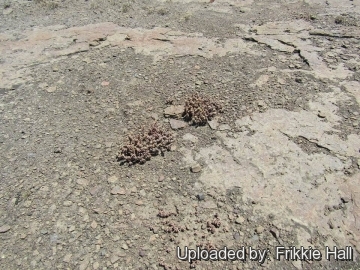 In habitat. Photo by: Frikkie Hall
In habitat. Photo by: Frikkie Hall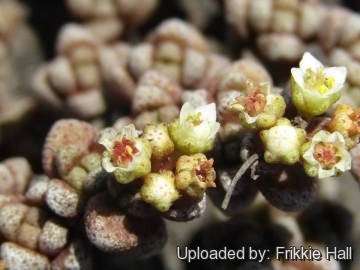 Crassula corallina Photo by: Frikkie Hall
Crassula corallina Photo by: Frikkie Hall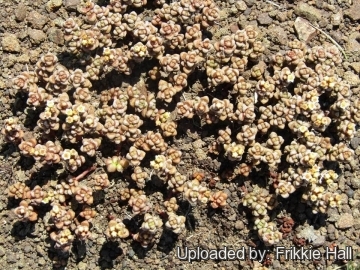 In habitat. Photo by: Frikkie Hall
In habitat. Photo by: Frikkie Hall Crassula corallina Photo by: © Plantemania
Crassula corallina Photo by: © Plantemania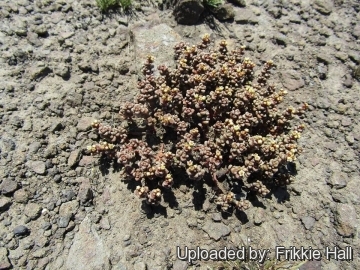 Crassula corallina Photo by: Frikkie Hall
Crassula corallina Photo by: Frikkie Hall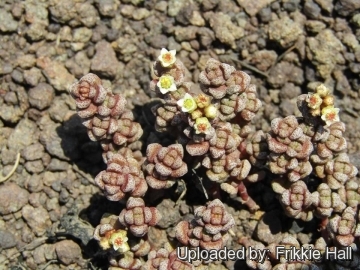 Crassula corallina Photo by: Frikkie Hall
Crassula corallina Photo by: Frikkie Hall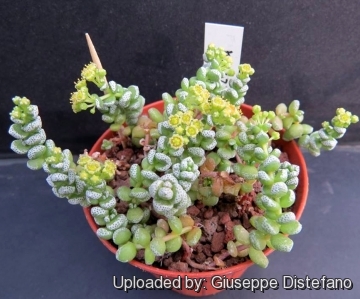 Crassula corallina Photo by: Giuseppe Distefano
Crassula corallina Photo by: Giuseppe DistefanoSend a photo of this plant.The gallery now contains thousands of pictures, however it is possible to do even more. We are, of course, seeking photos of species not yet shown in the gallery but not only that, we are also looking for better pictures than those already present.
Read More... Cultivation and Propagation: Crassula corallinaSN|26951]]SN|26951]] are quite smart for the extremely dry circumstances where these plants grow. But not so difficult to grow if you remember not to over-water in the Summer when they're taking their rest. They can grow easily on window sills, verandas and in miniature succulent gardens where they are happy to share their habitat with other smaller succulent plants, or in outdoor rockeries. They are spring and autumn grower (summer dormant).
Soil: They prefer a very porous potting mix to increase drainage. A slightly acid or neutral soil is ideal. You can grow a plant in a 6-10 cm pot for years and have perfectly happy plants. For best results, use a shallow pot.
Watering: Winter grower, provide some water all year around, in the wild most of the growth occurs during spring and autumn- recommend water less in summer. During the winter months, water only when the soil becomes completely dry. Wet soil quickly causes root and stem rot, especially during chilly winter months, but can re-root if taken care of. No water should ever be allowed to stand around the roots. Low ambient humidity is always needed. Roots will rot in ever damp soil.
Fertilization: The plants are fertilized only once during the growing season with a balanced fertilizer diluted to ½ the recommended strength.
Sun Exposure: They need full sun or bright, filtered light with ample airflow to stay compact, generally needs full sun part of the day to bloom, but avoid direct blasting sun in mid summer (with sun exposure the leaf develops a nice reddish tint), they do not do well in full shade as they tend to etiolate, fall over and rot easily.
Pest & diseases: Crassulas are sensitive to mealybugs.
Rot: Rot is only a minor problem with Crassula if the plants are watered and “aired” correctly. If they are not, fungicides won't help all that much. Care must be given in watering, keeping them warm and wet while growing, and cooler and dry when dormant.
Hardiness: Although the plants will survive mild frost if kept dry (hardy as low as -5° C) they should be protected from frost to prevent scarring. USDA 9b-12
Use: It is an excellent potted plant great for windowsill culture as well as in rock gardens. Indoors only in brightest position.
Pruning: Remove old leaves from plant base and dead flower spikes only.
Propagation: They are easily propagated by the removal of off shoots, remove a lateral shoot and insert the basal part buried in the soil. This shoot should root within a month, and small offshoots will form at the base. They can also be grown from seed or leaf cutttings.
Your Photos

by Giuseppe Distefano



















